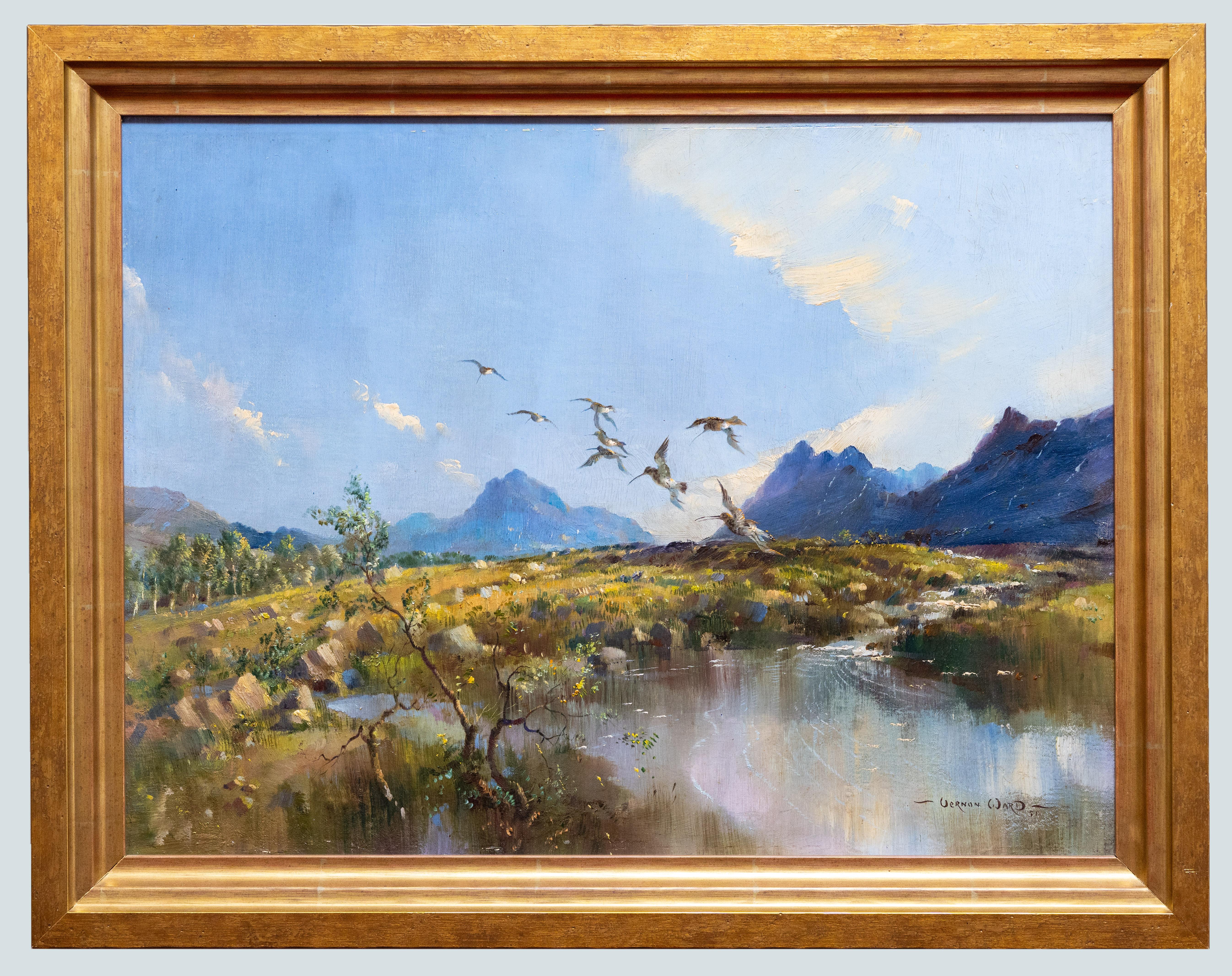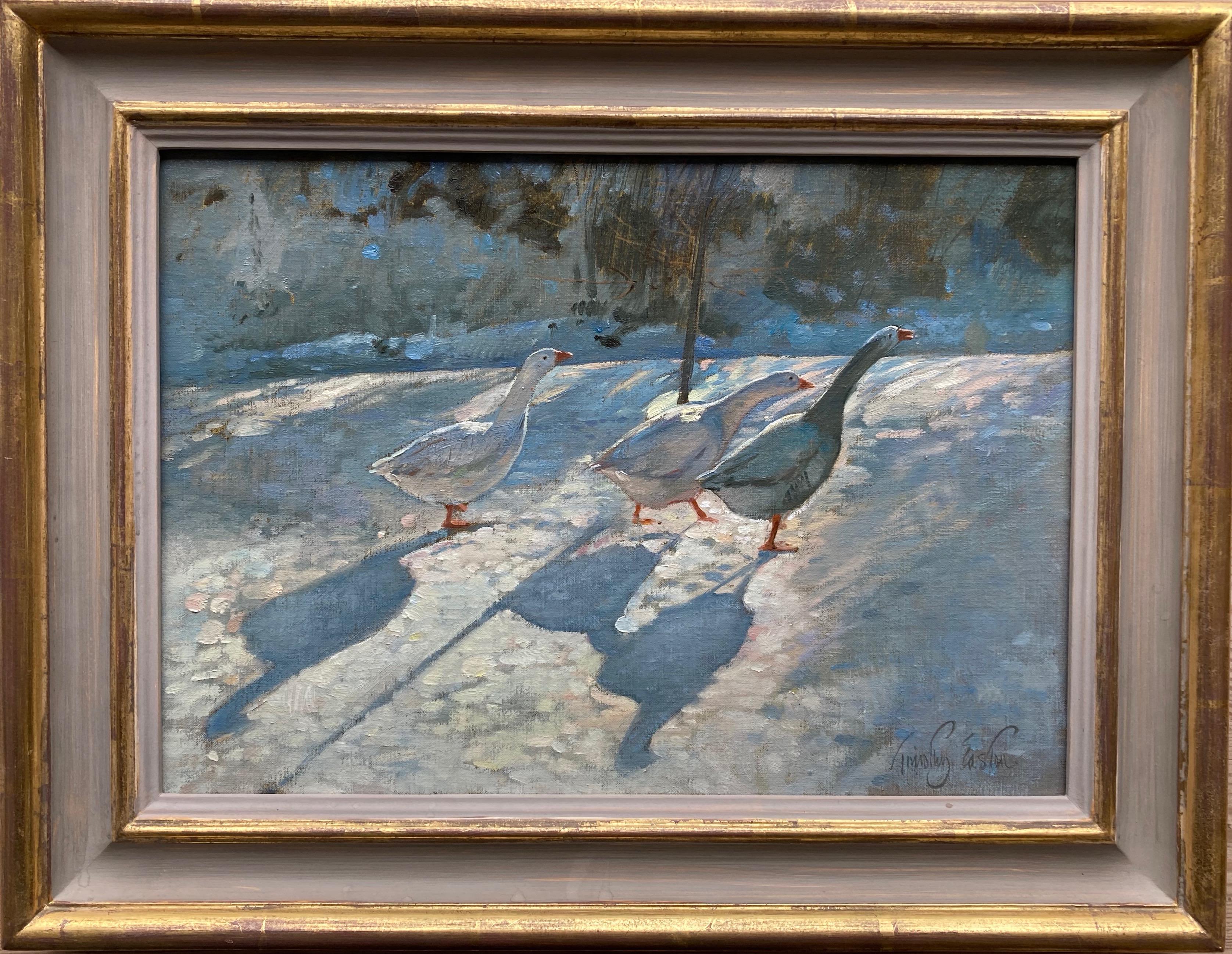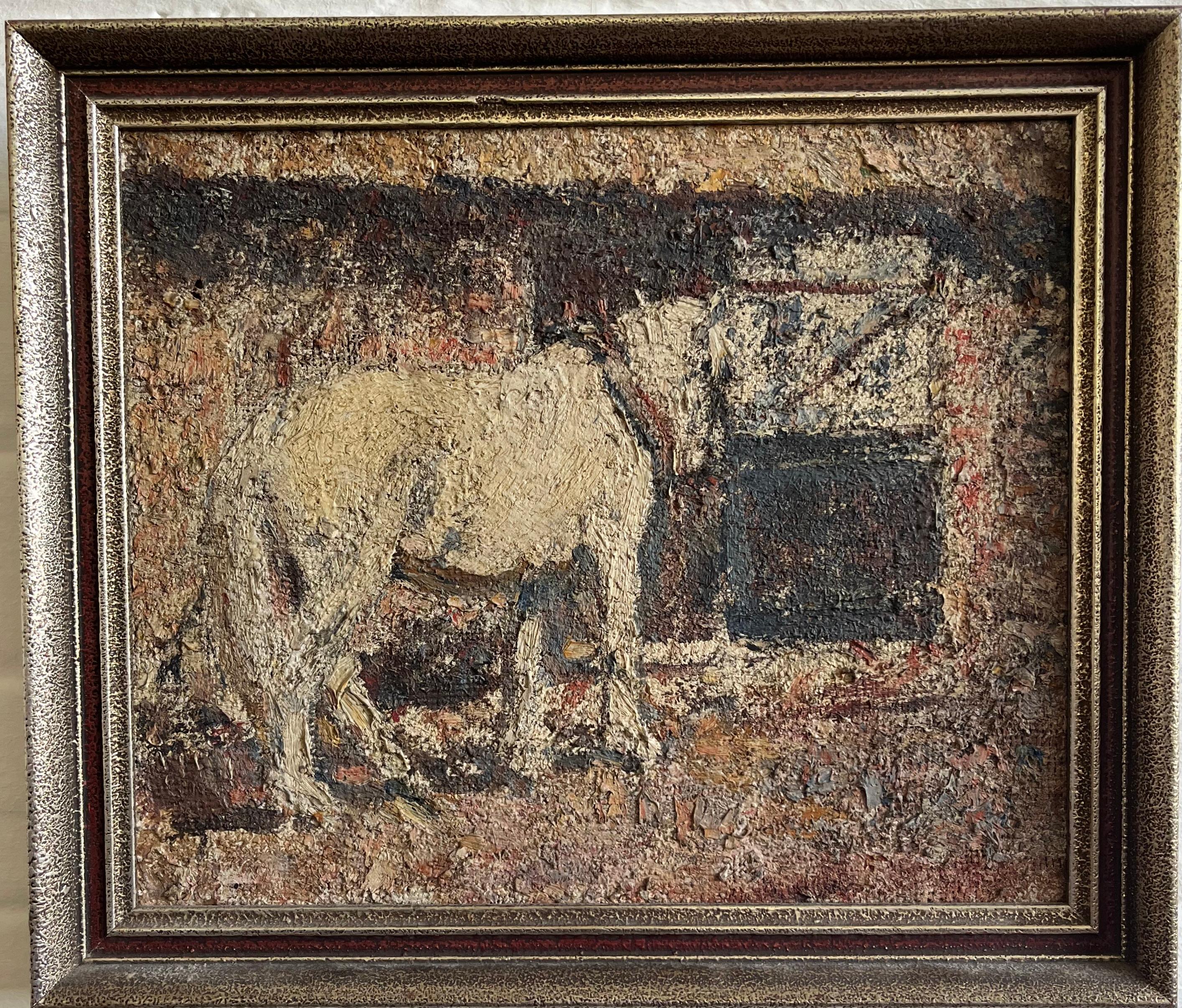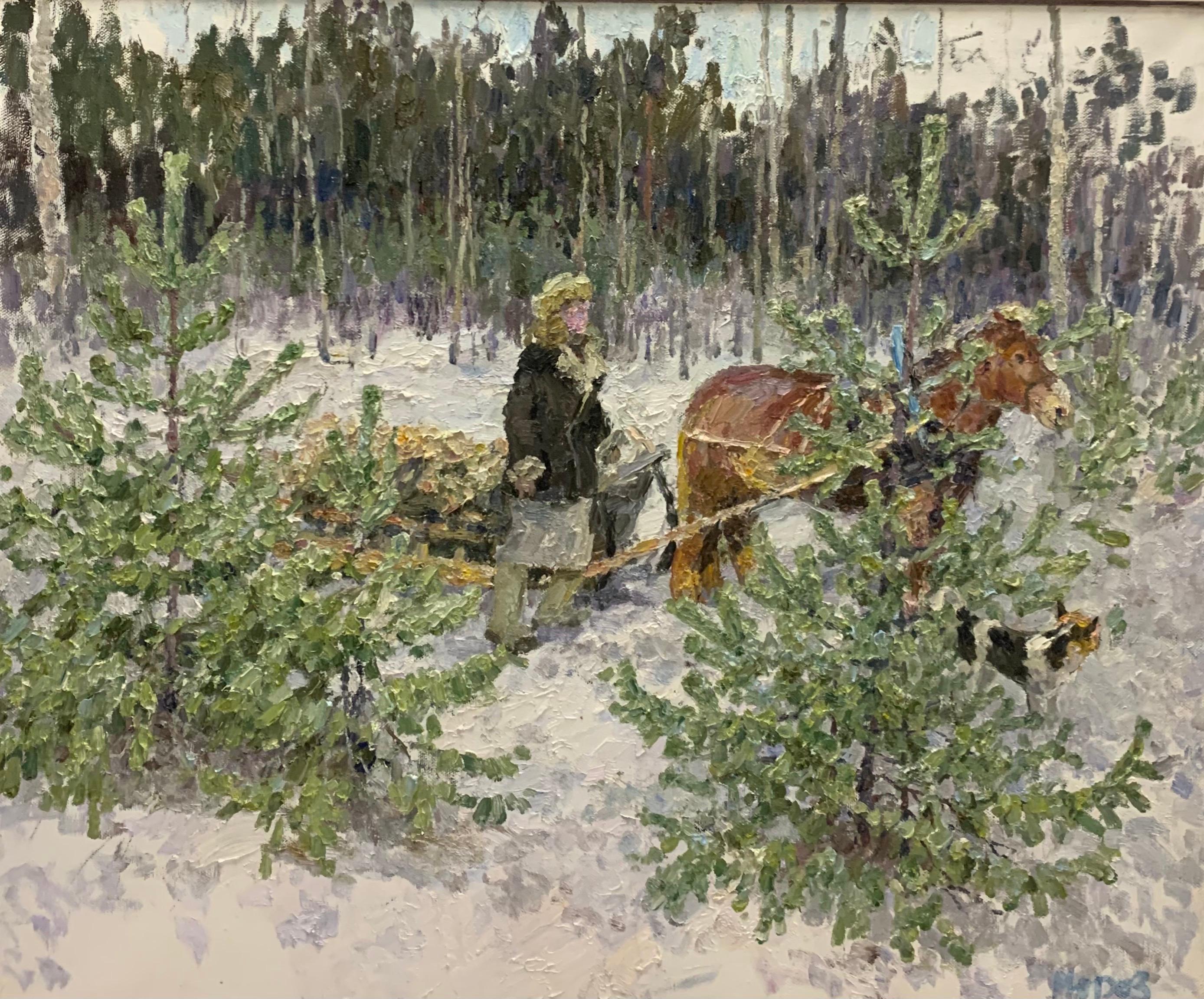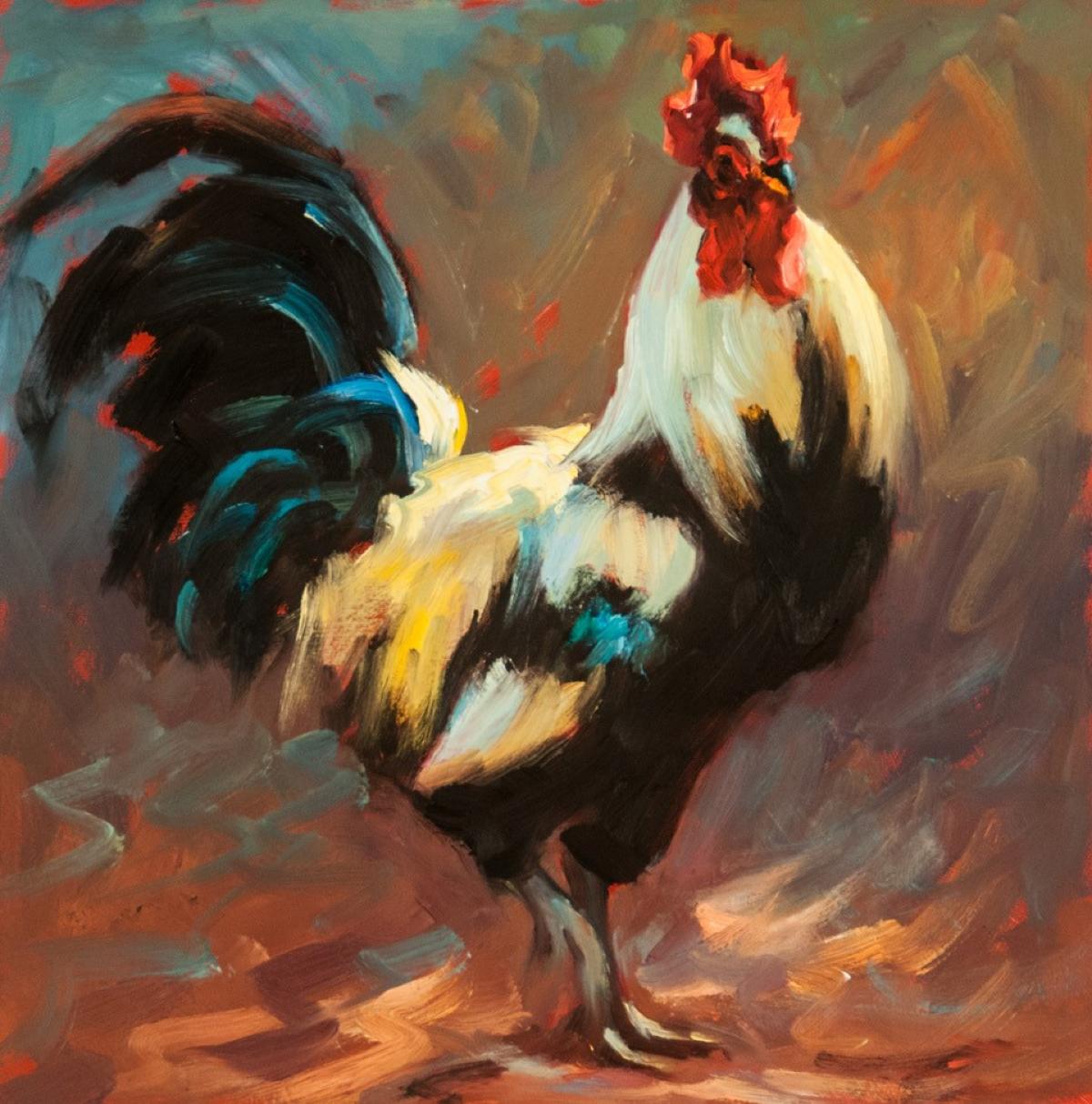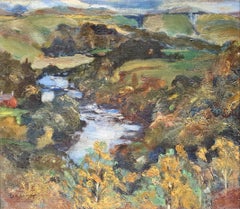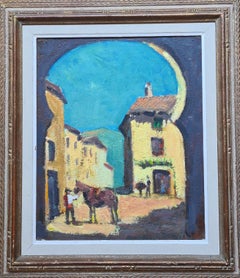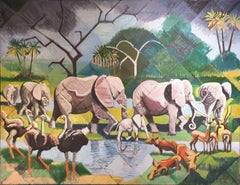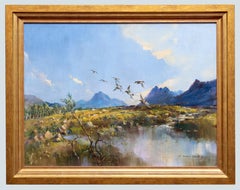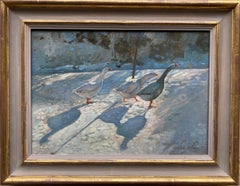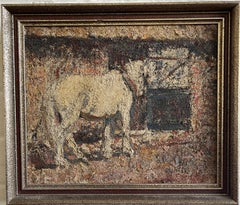Items Similar to 'Paysage de Neige Dans le Jura, Avec Chevreuil'. Mid 19th Century Oil on Canvas.
Video Loading
Want more images or videos?
Request additional images or videos from the seller
1 of 15
Gustave Courbet'Paysage de Neige Dans le Jura, Avec Chevreuil'. Mid 19th Century Oil on Canvas.1860s
1860s
About the Item
Mid 19th century French oil on canvas of a snow scene in the Jura by Gustave Courbet. Signed bottom right in his characteristic 'ox-blood' red.
Our painting is very similar in composition and style to the work currently held in the Modern Art Museum in Troyes, France, which is dated 1866.
The painting has been in a French collection since the early 20th Century and thence by descent.
UV examination reveals the Courbet signature is contemporary to the time of painting.
An opinion has been given by experts at two major Paris museums that the work is by Courbet but they differed slightly as to the period.
The painting is very similar to snow scenes shown in the Getty Exhibition of 2006, 'Courbet and the Modern Landscape' (see their catalogue)
The technique and colour palette is also very similar to the work sold by Sotheby's in 2019, Paysage de Neige Avec Arbres et Rochers dating to 1865.
(The catalogue note from that sale included:)
'He discovered virgin lands where no one had yet placed a foot, aspects and forms of landscape that one could say were unknown before he painted them...Each time he plunged into the bosom of deep nature, he was like a man who has penetrated a beehive and come out covered with honey'.
The critic Jules-Antoine Castagnary on Courbet:
'A rediscovery unseen in public for over 120 years, Paysage de neige avec arbres et rochers belongs to a small group of winter landscapes of comparable dimensions depicting the same birch trees in the artist's native region of Franche Comté. Other notable compositions include an earlier painting of 1860 in the Cincinnati Art Museum, which features deer and a rocky outcrop to the right, and a work of circa 1865 in the National Galleries of Scotland, Edinburgh, whose composition is close to the present work. Here, as in the Edinburgh work, Courbet explores the sous bois setting through a pure landscape devoid of narrative incident or human presence. In an altogether different form, the motif of the two leaning beech trees in the centre of the composition appeared as early as 1858 in Le Repas de chasse (Wallraf-Richartz-Museum, Cologne).
While Courbet's own mythology suggested an artist who painted quickly with a rough, macho facture, the well preserved surface of the present work reveals how sophisticated Courbet's handling of paint could be. The winter subject allowed Courbet to build layer upon layer of paint over the earth and remnants of the russet foliage through masterful use of the palette knife. As Charlotte Eyerman has written, 'snow itself is Courbet's central fascination in these pictures: it is ephemeral, transmutable, and inherently unstable...As a group, the snowscapes are extremely tactile and emphatically material, and they have a sculptural quality, in terms of both composition and surface.'
The self-proclaimed “proudest and most arrogant man in France,” Gustave Courbet created a sensation at the Paris Salon of 1850–51 when he exhibited a group of paintings set in his native Ornans, a village in the Franche-Comté in eastern France. These works, including The Stonebreakers (1849–50; now lost) and A Burial at Ornans (1849–50; Musèe d’Orsay, Paris) challenged convention by rendering scenes from daily life on the large scale previously reserved for history painting and in an emphatically realistic style. Confronted with the unvarnished realism of Courbet’s imagery, critics derided the ugliness of his figures and dismissed them as “peasants in their Sunday best.”
Courbet’s career was punctuated by scandal, often deliberately courted by the artist himself. Young Women from the Village, set in the outskirts of Ornans, generated further controversy at the Salon of 1852. Critics were nearly unanimous in reproaching Courbet for the “ugliness” of the three young women, for whom the artist’s sisters modelled, and for the disproportionately small scale of the cattle. Moreover, Courbet’s suggestive use of the term demoiselles (young ladies) to denote this trio of young village women further provoked his critics, who took issue with the blurring of class boundaries that the term implied. In the aftermath of the democratic uprisings in the countryside in 1848, Courbet’s depictions of a rural middle class in his Ornans subjects unsettled his Parisian audience at the Salons.
In 1855, Courbet’s monumental canvas, The Painter’s Studio: A Real Allegory Summing Up Seven Years of My Artistic Life (Musée d’Orsay), was rejected by the jury of the Exposition Universelle. Courbet retaliated by mounting his own exhibition in his Pavilion of Realism, built within sight of the official venue, where he displayed, among more than forty other works, The Painter’s Studio. The meaning of Courbet’s unfinished painting remains enigmatic: the figures on the left suggest the various social types that appear in his canvases, while on the right he portrays his friends and supporters. The artist painted himself at the center of this universe, paradoxically painting a landscape within the confines of his studio. The accompanying exhibition catalogue included Courbet’s seminal “Realist Manifesto,” in which he proclaimed his fidelity to subjects drawn from modern life.
During the 1850s, Courbet’s embrace of modernity led him beyond the Ornans subjects that had established his reputation. He captured the café culture of bohemian Paris, painting portraits of its denizens and works inspired by popular café chansons (songs). An avid hunter, Courbet also enjoyed critical and popular success with his hunting scenes, the first of which he exhibited at the Salon of 1857 alongside his portrait of the actor Louis Gueymard. Summering at the fashionable seaside resort of Trouville in 1865, he produced society portraits on commission as well as the more intimate Jo, La Belle Irlandaise, which fuses portraiture and genre painting. The following year, Courbet submitted Woman with a Parrot to the Salon, having vowed to paint a nude that its conservative jury would accept. Like Manet‘s Olympia of 1863 (Musée d’Orsay), Courbet’s nude was unmistakably modern as opposed to the idealized nude “Venuses” and “Eves” by academic artists that proliferated at the Salons. His supporters lauded him for painting “the real, living French woman.”
Landscape played a central role in Courbet’s imagery. From the beginning of his career, he identified himself with the topography of his native Ornans. The distinctive limestone cliffs of the surrounding Jura Mountains provide the backdrop for one of his early self-portraits and recur in Young Ladies of the Village. He developed a repertoire of landscape motifs rooted in his native Franche-Comté, including the Puits-Noir, or Black Well, which inspired a series of paintings that span more than a decade, and the source of the Loue River, a geological curiosity and popular tourist site. In the summer of 1864, he painted at least four variations, on canvases of the same size, of the Loue River as it surges forth from the mouth of the cave in which it originates. He used both palette knife and brush to render the rock formations and foaming surface of the rushing water. Visiting the south of France in 1854, Courbet produced a group of luminous, seemingly infinite views of the Mediterranean. He did not immerse himself fully in painting “landscapes of the sea,” as he preferred to call his seascapes, until subsequent trips to the Normandy coast, undertaken between 1859 and 1869, where he encountered Claude Monet and James McNeill Whistler in 1865. In 1870, Courbet exhibited only seascapes at the Salon—a calculated assertion of his command of the genre.
That same year, Courbet flouted the authority of the state—not for the first time—by publicly refusing the award of the Legion of Honor, declaring his independence from any form of government. Since the time of its creation, Courbet’s realist imagery—from the downtrodden laborers of The Stonebreakers (1849–50) to the rural bourgeoisie of Ornans—had prompted political associations, but the artist’s actual engagement with politics was complex. He called himself a “republican by birth” but did not take up arms during the 1848 Revolution, adhering to his pacifist beliefs. He entered the political arena on the eve of the Paris Commune of 1871 and played an active role in the political and artistic life of this short-lived socialist government. With the demise of the Commune, Courbet was arrested and sentenced to six months imprisonment for his involvement in the destruction of the Vendôme Column, a symbol of Napoleonic authority. In 1873, fearing persecution by the newly installed government, Courbet voluntarily went into exile in Switzerland, where he died in 1877. Through his powerful realism, Courbet became a pioneering figure in the history of modernism.
(With thanks to the Metropolitan Museum of Art, New York)
Courbet's paintings are held in private and national collections throughout the World.
- Creator:Gustave Courbet (1819 - 1877, French)
- Creation Year:1860s
- Dimensions:Height: 19 in (48.26 cm)Width: 22.5 in (57.15 cm)Depth: 2 in (5.08 cm)
- Medium:
- Movement & Style:
- Period:
- Condition:Canvas size 15 inches x 18 inches.There is some wear and losses to the frame. The painting is in good original condition though there may have been some earlier restoration and cleaning.
- Gallery Location:Cotignac, FR
- Reference Number:Seller: LG/Courbet/SnowScene.1stDibs: LU143028384052
About the Seller
5.0
Platinum Seller
Premium sellers with a 4.7+ rating and 24-hour response times
Established in 2000
1stDibs seller since 2020
239 sales on 1stDibs
Typical response time: 1 hour
- ShippingRetrieving quote...Shipping from: Cotignac, France
- Return Policy
Authenticity Guarantee
In the unlikely event there’s an issue with an item’s authenticity, contact us within 1 year for a full refund. DetailsMoney-Back Guarantee
If your item is not as described, is damaged in transit, or does not arrive, contact us within 7 days for a full refund. Details24-Hour Cancellation
You have a 24-hour grace period in which to reconsider your purchase, with no questions asked.Vetted Professional Sellers
Our world-class sellers must adhere to strict standards for service and quality, maintaining the integrity of our listings.Price-Match Guarantee
If you find that a seller listed the same item for a lower price elsewhere, we’ll match it.Trusted Global Delivery
Our best-in-class carrier network provides specialized shipping options worldwide, including custom delivery.More From This Seller
View AllImpressionist Oil on Canvas, The Salmon Pool, Canonbie, Scotland
Located in Cotignac, FR
Early 20th Century oil on canvas view of a salmon river by Miss D L Murray. The painting is signed bottom left and there is an artist's label with title to th...
Category
Early 20th Century Impressionist Landscape Paintings
Materials
Oil, Canvas
$2,487 Sale Price
32% Off
French Mid-Century Oil on Canvas. 'Arco de Zocodover' in Toledo, Spain.
Located in Cotignac, FR
Mid Century oil on canvas view of the Moorish arch in the Plaza de Zocodover in Toledo, Spain by Louis Léo Hourdille. The painting is signed and titled to the back of the canvas.
Ho...
Category
Mid-20th Century Impressionist Landscape Paintings
Materials
Oil, Canvas
French Impressionist Barbizon School Landscape, Where Sheep Safely Graze
By Georges Guerin
Located in Cotignac, FR
1930s French Impressionist Barbizon School oil on panel view of a church in a bucolic landscape by Georges Guerin (1910-1984). The painting is signed bottom right and also signed top...
Category
1930s Impressionist Landscape Paintings
Materials
Board, Oil
Large Scale Surrealist Oil on Canvas, 'At the Watering Hole'.
Located in Cotignac, FR
Large late 20th century oil on canvas of animals at the watering hole by British artist Derek Carruthers. Signed to the bottom right.
A magical, highly colourful and energetic paint...
Category
Late 20th Century Surrealist Animal Paintings
Materials
Oil, Canvas
$5,323 Sale Price
31% Off
Large Scale Surrealist Oil on Canvas, 'Noah's Ark and the Animals'.
Located in Cotignac, FR
Very large scale late 20th century oil on canvas of Noah's Ark and the Animals by British artist Derek Carruthers. Signed to the bottom right.
A magical, highly colourful and energe...
Category
Late 20th Century Surrealist Animal Paintings
Materials
Canvas, Oil
$5,690 Sale Price
27% Off
Apples, Hommage to Rousseau, Large, Square, Naive Oil on Canvas.
Located in Cotignac, FR
Large square French fantasy naive oil on canvas by Jean Henry Brossat. Signed to the front and bearing a title in Russian (?) script to the rear. In a plai...
Category
Mid-20th Century Animal Paintings
Materials
Oil, Canvas
$3,487 Sale Price
20% Off
You May Also Like
Arran skyline, Sannox, Isle of Arran, with snipes
Located in London, GB
Vernon Beauvoir Ward (1905–1985) was a British painter and commercial artist renowned for his evocative depictions of Edwardian life, wildlife, and landscapes. Born in Hampstead, Lon...
Category
Mid-20th Century Impressionist Landscape Paintings
Materials
Canvas, Oil
Timothy Easton, Geese in a snowy landscape
Located in Harkstead, GB
A lovely luminescent oil of geese in the snow.
Timothy Easton (born 1943)
Trio on the crest
Signed and titled and dated 1999 to the reverse
Oil on canv...
Category
20th Century Impressionist Animal Paintings
Materials
Oil, Canvas
"Landscape with dog " Dog, Spring, oil cm. 140 x 110
By Georgij Moroz
Located in Torino, IT
Dog, Green,Landscape,Russian Painter,russian art
Georgij MOROZ (Dneprodzerzinsk, Ucraina, 1937 - St. Petersburg, 2015)
1937: he was born in Dneprodzerzinsk, Ucraina.
1949-56: he b...
Category
1980s Impressionist Animal Paintings
Materials
Canvas, Oil
Harry Fidler, Impressionist study of a working Horse in farmyard
By Harry Fidler
Located in Harkstead, GB
A super example of Harry Fidler's impressionist studies with characteristic use of heavy impasto. The flamboyant sculpting of the paint surface cannot be fully conveyed in a 2D image...
Category
Early 20th Century Impressionist Landscape Paintings
Materials
Canvas, Oil
"Back home" Snow, Forest, Winter , White, Impressionism, Christmas 120 x 100 cm
By Georgij Moroz
Located in Torino, IT
Snow, Forest, Winter, White, Horse. Dog, Sledge, Fir, Russia, Cold
Pirra Gallery Label
Georgij MOROZ (Dneprodzerzinsk, Ucraina, 1937 - St. Petersburg, 2015)
1937: he was born in Dne...
Category
1990s Impressionist Landscape Paintings
Materials
Canvas, Oil
The Proud Rooster, Oil, Framed, Texas Artist, Luckenbach, Impressionism 12x`12
Located in Houston, TX
The Proud Rooster is a framed oil painting of a Rooster by Texas Artist Cheri Christensen .This rooster is from Luckenbach, Texas . Luckenbach is famous for Rusty the Rooster. Fram...
Category
2010s American Impressionist Animal Paintings
Materials
Canvas, Oil
Recently Viewed
View AllMore Ways To Browse
Mid Century On Sale
Mid Century Modern Deer
Napoleonic Paintings
Portraits Small Period 19th Century
Gustave Courbet
Impressionist Painting Of Painter Painting Nude Model
Vendome Collection
Antique Deer Painting
Hunter With Deer
Les Hunter
Seven Seas Collection
Dan Winters
Antique Black Limestone
Jules Cavallies
Mid Century Modern Winter Scene
Two Women In A Cafe
19th Century Virgin Oil Paintings
Large Parrot Painting
